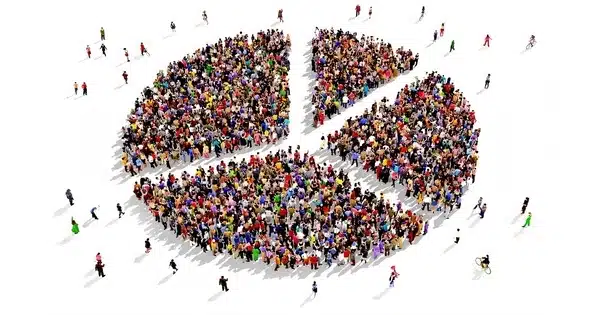The study of the relationship between politics and population change is known as political demography. It is a demography area that studies the link between population dynamics and political processes. Birth, mortality, age structure, and migration are the classic demographic mechanisms that drive population change. It investigates how changes in population size, composition, distribution, and migration patterns affect political results and policy.
However, with political demography, there is always room for assimilation as well as border and identity change, which can redraw population boundaries in ways that biological populations cannot.
Here are some key aspects of political demography:
- Population Growth and Political Power: The idea that population size can influence a country’s political strength is a key principle in political demography. Nations with larger populations frequently have stronger economic and military might, which can influence their international status.
- Demographic Transition Theory: Demographers created this theory to describe the stages of population growth and their implications for societies. It implies that as nations advance through periods of decreased birth and death rates, their age structure changes, which can have political and social ramifications.
- Age Structure and Politics: A population’s age distribution can have an impact on political outcomes. Countries with a high proportion of youthful people, for example, may confront different political issues and goals than those with an elderly population. Youth bulges, in particular, have been linked to social and political insecurity.
- Migration and Politics: Migration patterns, including immigration and emigration, can have political implications. Immigration policies, for example, can be contentious political issues, with debates over border control, citizenship, and the integration of immigrants.
- Urbanization: As populations become more urbanized, with people moving from rural to urban areas, this shift can affect political dynamics. Urban areas often have different political preferences and issues compared to rural areas.
- Fertility Rates and Family Policies: Fertility rates and family policies, such as maternity leave and child care, can influence the size and composition of a population. Governments may implement policies to encourage or discourage certain fertility trends for economic and political reasons.
- Ethnic and Religious Composition: The ethnic and religious composition of a community can have a considerable impact on political stability and conflict. Tensions and disputes over identity and power may arise in ethnically or religiously diverse populations.
Some of the challenges studied in the context of political demography include: surges of young people in developing countries, considerably increasing aging in wealthy countries, and the influence of increasing urbanization. Political demographers analyze issues such as population growth in the context of politics. The relative balance of variables such as mortality, fertility, and immigration influences population growth.
Political demography studies can help policymakers make decisions about healthcare, education, immigration, and social welfare, among other things. Governments utilize demographic data to prepare for the future and make decisions that affect their populations’ well-being.
In conclusion, political demography is a multidisciplinary study that studies the interaction between population dynamics and politics. It enables us to comprehend how changes in population size, composition, and distribution impact political institutions, policies, and outcomes at all levels, from local to global.














